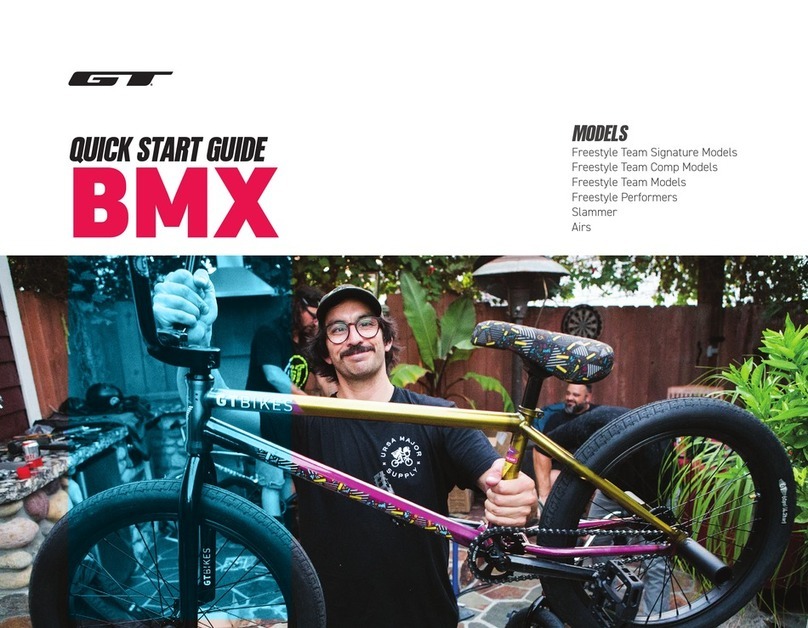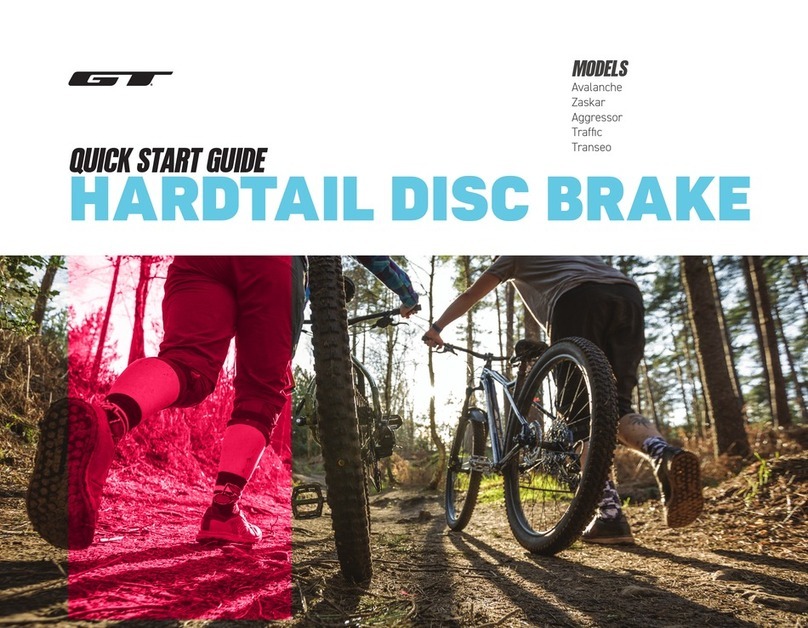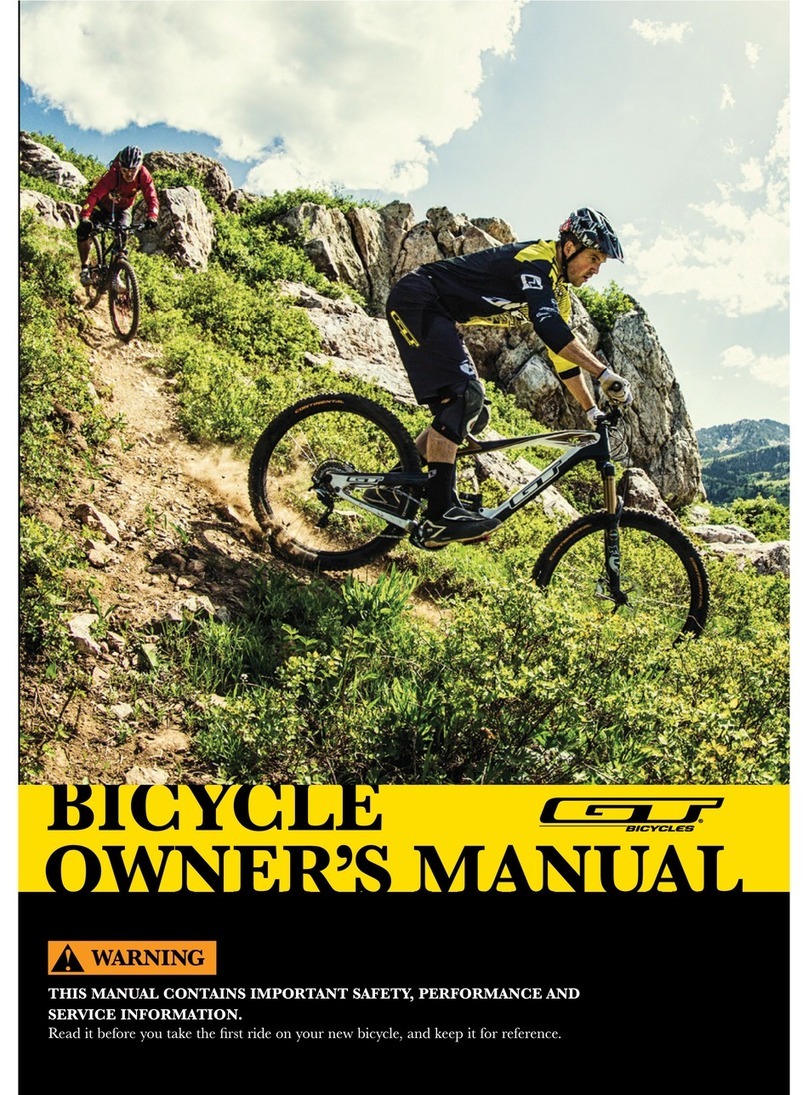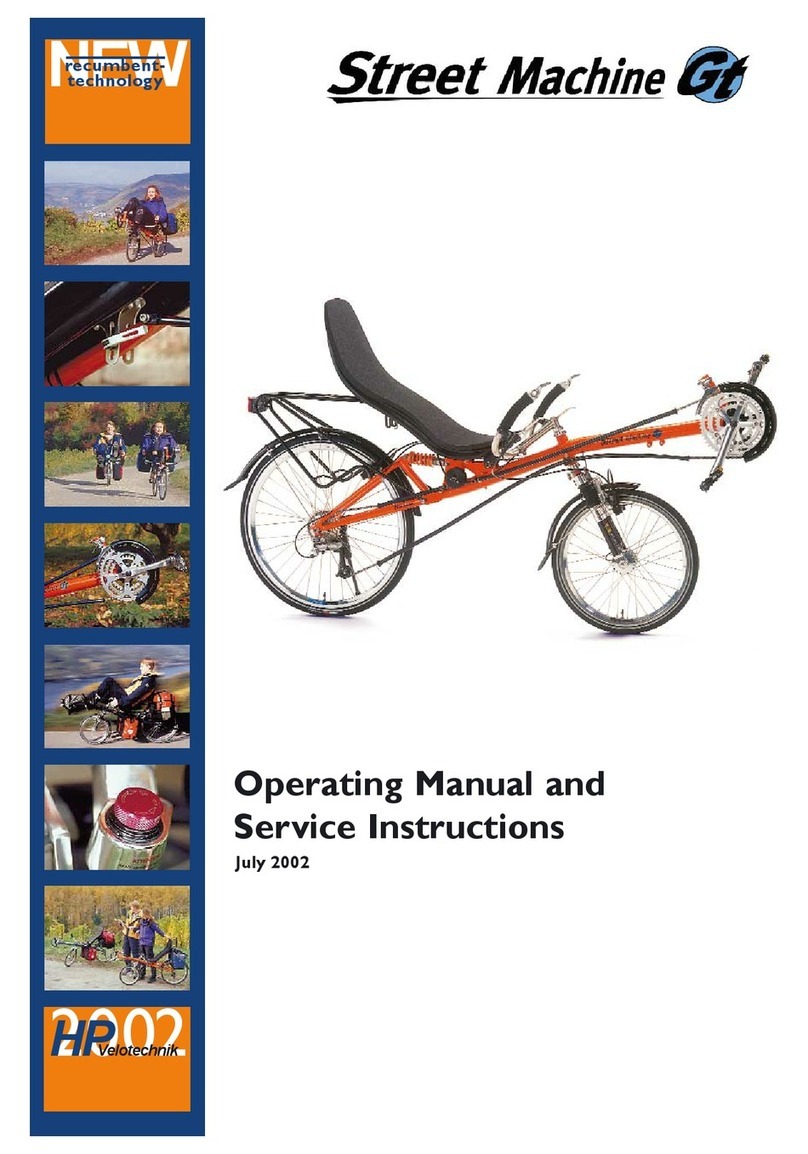SAFETY INFORMATION
Important Composites
Message
Your bike (frame and components)
is made from composite materials
also known as “carbon fiber.”
All riders must understand a
fundamental reality of composites.
Composite materials constructed
of carbon fibers are strong and
light, but when crashed or
overloaded, carbon fibers do not
bend, they break.
For your safety, as you own and
use the bike, you must follow
proper service, maintenance, and
inspection of all the composites
(frame, stem, fork, handlebar, seat
post, etc.) Ask your GT Dealer for
help.
We urge you to read PART II,
Section D. “Inspect For Safety” in
your GT Bicycle Owner’s Manual
BEFORE you ride.
You can be severely injured,
paralyzed or killed in an accident
if you ignore this warning.
Inspection & Crash
Damage Of Carbon
Frames/Forks
After A Crash Or Impact:
Inspect frame carefully for
damage (See PART II, Section D.
Inspect For Safety in your
GT Bicycle Owner’s Manual. )
Do not ride your bike if you see any
sign of damage, such as broken,
splintered, or delaminated carbon
fiber.
Any of the following may indicate
a delamination or damage:
· An unusual or strange feel to
the frame
· Carbon which has a soft feel or
altered shape
· Creaking or other unexplained
noises,
· Visible cracks, a white or milky
color present in carbon fiber
section
Continuing to ride a damaged
frame increases the chances of
frame failure, with the possibility
of injury or death of the rider.





































